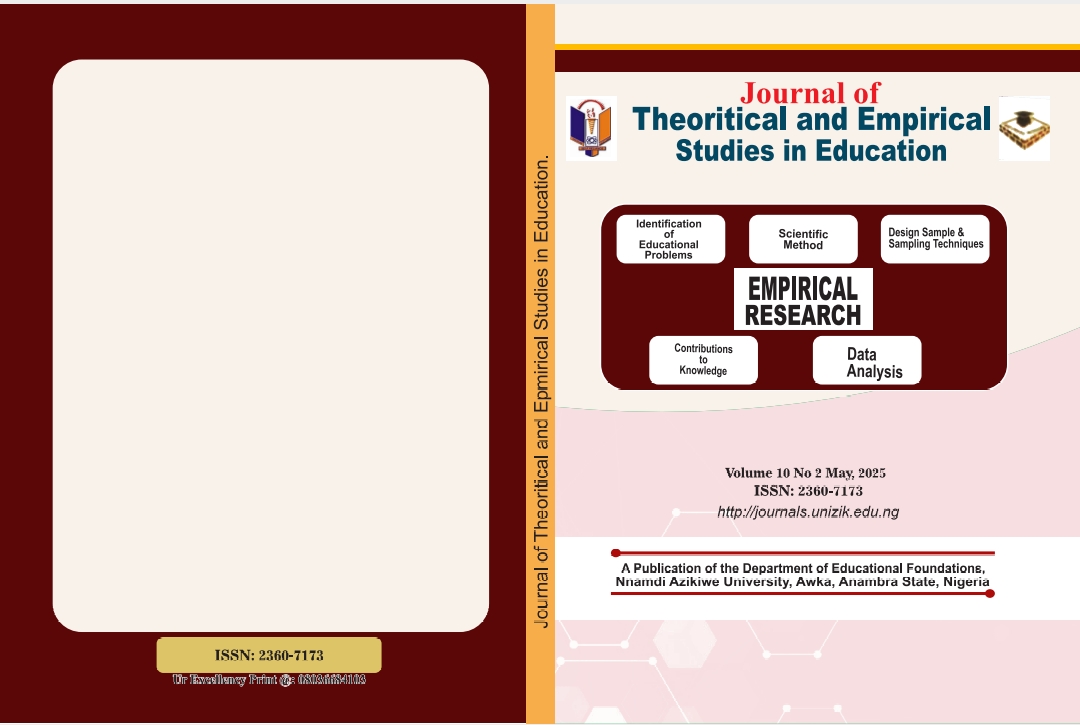POVERTY AND PEER PRESSURE AS PREDICTORS OF READING CULTURE AMONG SECONDARY SCHOOL STUDENTS IN IBADAN, NIGERIA
Keywords:
Poverty, Peer pressure, Adolescent reading culture.Abstract
Research evidence signals that students’ reading culture is declining on daily
basis; hence, this study sampled 250 students across secondary schools to
investigate poverty and peer pressure as predictors of reading culture among
secondary school students in Ibadan, Nigeria. One research question and four
hypotheses guided the research. Researchers self-designed Instrument tagged
Poverty and Peer Pressure as Predictors of Reading Culture Scale (PPPRCS,
R=.70) was used for data collection. Data were analysed using frequency counts,
percentage, mean and standard deviation, Pearson Product Moment Correlation
and multiple regression analysis. The adolescents have moderately high levels of
poverty (mean= 29.38, SD=5.82), peer pressure (mean=27.00, SD=8.16) but low
reading culture level (mean=16.94, SD=11.07), a weak, negative and significant
correlation between adolescents’ poverty level and reading culture (r=-0.42;
n=250, p<.05)., high, negative and significant relationship between adolescents
peer pressure and reading culture (r=-0.629, n=250, p<.05) Furthermore, results
indicate that the relative contributions of adolescents’ poverty level (β=.310; t=
8.201p<.05) and peer pressure (β=.295; t=-5.947, p<.05) to adolescents’ reading
culture are significant. Lastly, there is a significant composite contribution of
adolescents’ poverty level and peer pressure to adolescents’ reading culture.
(R=.309; R2 =.095; F (2,247) = 13.716). Based on these findings, it was
recommended that educational stakeholders should endeavour to provide basic
needs for students’ educational materials to boost their reading culture,
motivation in form of scholarship and gainful employment opportunities should
be made available to the graduating students and obviously this may encourage
their reading culture and enhance their learning outcomes in schools.




